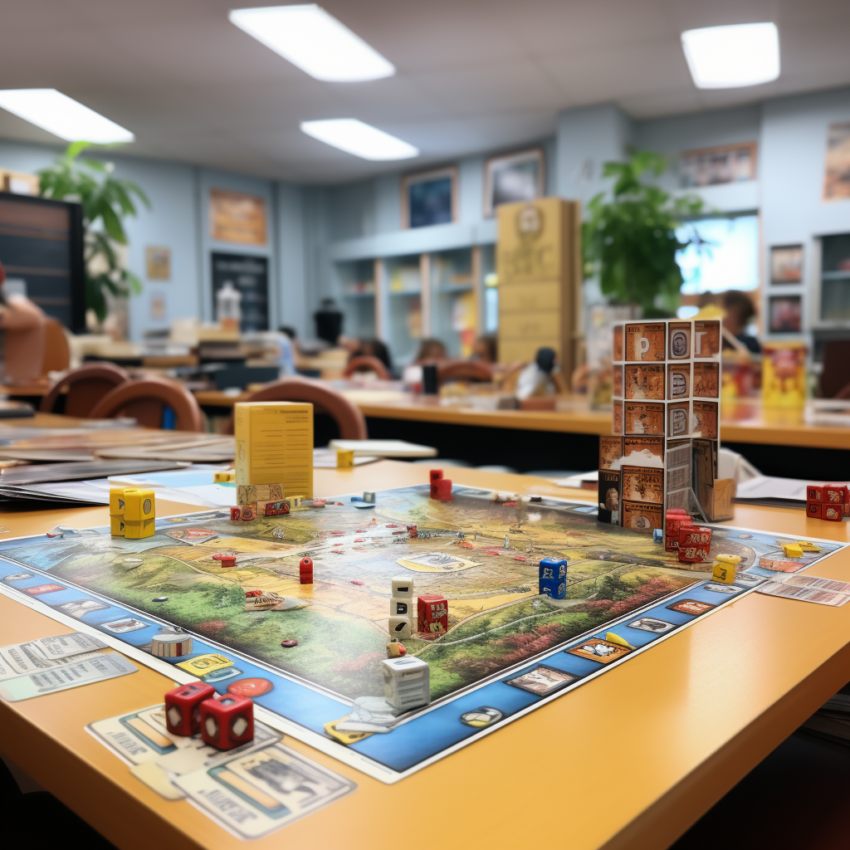In the world of education, it’s not just about textbooks and lectures, in fact sometimes those things get in the way of true education. The best kind of classroom fosters an environment where learning is engaging and enjoyable, and a powerful tool that often goes overlooked is the art of play. Whether it’s a spirited game of tag in the yard or a strategic board game on the classroom floor, incorporating games into your teaching repertoire can be transformative. Not only do games stimulate the mind, but they also help build strong connections between teachers and students.
Play: Gateway to Connection
Play is a universal language that transcends cultural boundaries and speaks directly to the heart. When we incorporate play into the classroom, we tap into a wellspring of joy and enthusiasm that is often missing in traditional teaching methods. Games require a certain degree of trust, and playing them fairly strengthens that trust. Students learn resilience and how to win and lose with grace by seeing the teacher do the same thing. Trust and resilience are huge assets in the classroom.
Learning Through Play
Games can be tailored to fit various educational objectives. Whether you want to reinforce math concepts, teach history, or explore scientific principles, there’s a game for every subject. By aligning games with your curriculum, you can seamlessly integrate play into the learning process.
Enhance the Classroom Experience with Play
As a teacher, you hold the key to unlocking your students’ potential. By integrating games into your curriculum, you can make the learning experience not only educational but also enjoyable. Here are some ways games can enhance the classroom experience:
- Improve Focus: Games capture students’ attention and keep them engaged. When students are actively involved in a game, they are less likely to be distracted by other thoughts or external factors.
- Cultivate Problem-Solving Skills: Many classroom games require students to think critically and solve complex problems. These challenges encourage students to think outside the box and develop their problem-solving skills.
- Foster Respect: Playing games with your students can level the playing field, fostering a sense of camaraderie and respect. In a game, everyone has an equal chance to succeed, regardless of their academic abilities.
- Build Connections: Games create a shared experience that brings students and teachers closer together. When you play a game with your students, you become a participant in their world, and this shared experience can strengthen your bond.
- Promote Active Learning: Games encourage active learning, where students are not passive recipients of information but active participants in the learning process. This leads to better retention and understanding of the material.
Play is Healthy for Teachers Too!
Beyond the immeasurable good that play can offer students, it benefits the well being of educators as well. Get into a game of tag, or foursquare and remember what it’s like to be a kid. Play card games with your students and board games. Have a little fun! It’s impossible to drop the teacher role completely. Despite the belief that play comes naturally to kids, they still need to learn the rules, how to play fairly, and how to lose gracefully. What actually comes naturally to kids is a keen sense for finding opportunities for fun. To them, most adults seem like they lost that sense, probably because they have. You can teach them how to play, but you can show them that joy and fun doesn’t disappear once you reach adulthood.
In conclusion, the power of play in the classroom cannot be underestimated. By integrating games into your teaching approach, you can create an environment where students are not just learners but active participants in their education. This approach not only enhances their academic abilities but also builds strong connections and fosters a lifelong love for learning. So, go ahead, play that game with your students, and watch the magic of education unfold. After all, spending time together in the spirit of learning and fun is time well spent.

